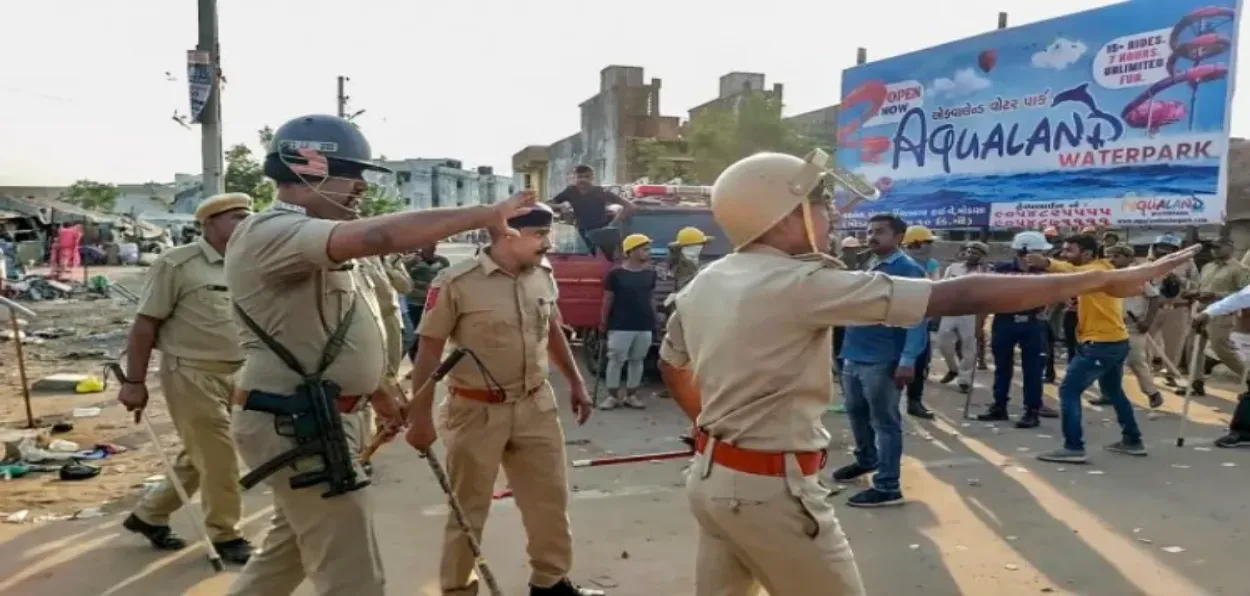
Amir Khan
Festivals are supposed to bring people together, generate warmth between communities, and create a sense of unity. However, it is ironic that social media platforms in India, particularly Twitter, throw up a groundswell of negativity around festivals like Diwali, Ramazan, Eid, Holi, Ram Navami, and Christmas, amplifying stray incidents of communal disturbances.
As per the Oxford University Press survey, around 54 percent of people in India, particularly young Indians turn to social media for news. This increased reliance on social media has also led to a vicious cycle of negativity and an echo chamber effect, where incidents are amplified and sensationalized, leading to further polarization.
It is important to understand that intergroup conflict is inevitable in heterogeneous societies. In India also, at least from the beginning of the 18th century, Hindu-Muslim clashes have been reported. Violence was reported in Ahmadabad during the Holi celebration in 1714 around the rumors of cow slaughter. C A Baylay of Cambridge University reports that there were communal riots in Varanasi (1809), Moradabad and Kashipur (1833), Bareilly, Kanpur, and Allahabad (1837-52). In 1871 Ram Navami and Muharram coincided leading to violence in Bareilly and Pilibhit. In 1893 major disturbances were reported in Azamgarh.
Even in recent cases, the clashes are mostly triggered by allegations of cow slaughter or provocation due to loud music being played in front of the mosques. Large processions taken on these occasions are seen as a show of strength by the community. Tension rises and erupts the moment these processions cross the places of worship of the other community. Usually, such violence is spontaneous and the chances of the situation exploding are higher in case the place has a history of violence.
Twitter makes it feel as if communal violence is the only way in which Hindus and Muslims interact in India. Their inherent economic, cultural, and political interdependencies are conveniently ignored to create a polarizing narrative for likes and retweets. In a continent-sized nation like India, there are innumerable incidents of conflict and tension within communities as happens everywhere, regardless of religion or caste, Muslims fighting Muslims, Hindus fighting Hindus, and so on, over a variety of day-to-day issues. However, these are not reflective of the larger societal fabric and are an exception than a rule. The Indian society is by and large at peace with itself and rural India is particularly better integrated. In Indian villages, it is difficult to tell a Muslim from a Hindu. It is only when the societies are in transition, economic factors and urbanization and resource constraints emerge and the identity-politics comes to the fore.
The problem with the current state of social media in India is that many large handles only share incidents of communal disturbances. Hindu and Muslim supporting handles amplify their respective versions of the events. This creates an environment of mistrust and negativity, leading to the creation of echo chambers that only serve to reinforce existing biases and prejudices.
While social media has the potential to be a powerful tool for disseminating information and connecting people, it is essential to recognize its limitations. It is not a substitute for in-depth reporting or unbiased journalism. Instead, it should be seen as a complement to these traditional sources of news and information, offering a unique perspective that can enhance our understanding of events.
To achieve this, social media influencers need to exercise restraint and not amplify negativity or misinformation. They must recognize their responsibility in shaping public opinion and work towards promoting a more nuanced and balanced view of events. They should avoid sharing unverified information or rumors and instead focus on highlighting positive stories that showcase the diversity and unity of Indian society. During the Ram Navami incidents, many influencers had to delete their tweets after creating much consternation after it was found that the videos were doctored. In times of deep fake technologies, the responsibility that is on the shoulders of social media influencers and large handles simply becomes manifold.
Twitter, in particular, needs to take steps to ensure that its platform does not become a breeding ground for hate speech or propaganda. It should invest in tools and technologies that can help identify and remove content that violates its terms of service. It should also work with local law enforcement agencies to address incidents of hate speech and incitement to violence, ensuring that those responsible are held accountable for their actions.
ALSO READ: When advocate Anas Tanwir and cabbie Yatin Kumar shared food for fasting without saying it so
Social media particularly Twitter has the potential to be a force for good in India. It can help connect people and bring attention to important issues that may have otherwise gone unnoticed. However, it is essential to recognize the limitations of these platforms and work towards promoting a more nuanced and balanced view of events. This requires the exercise of restraint and responsibility on the part of social media influencers and the development of effective tools and technologies by Twitter to ensure that its platform does not become a breeding ground for hate speech or propaganda. By working together, we can ensure that social media promotes peace and harmony rather than division and conflict.
Amir Khan is a Delhi-based chef, entrepreneur, and technology buff. Views are personal.
